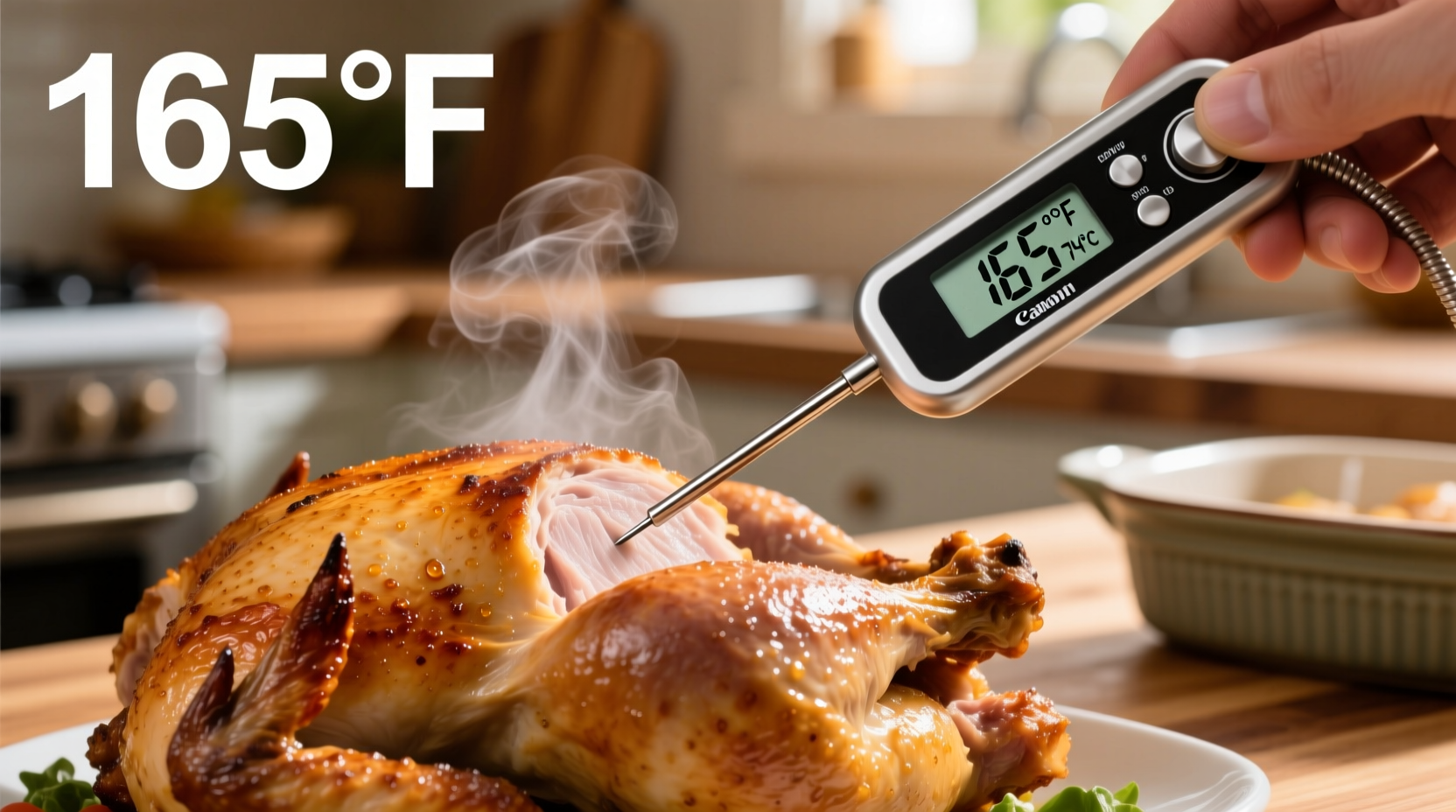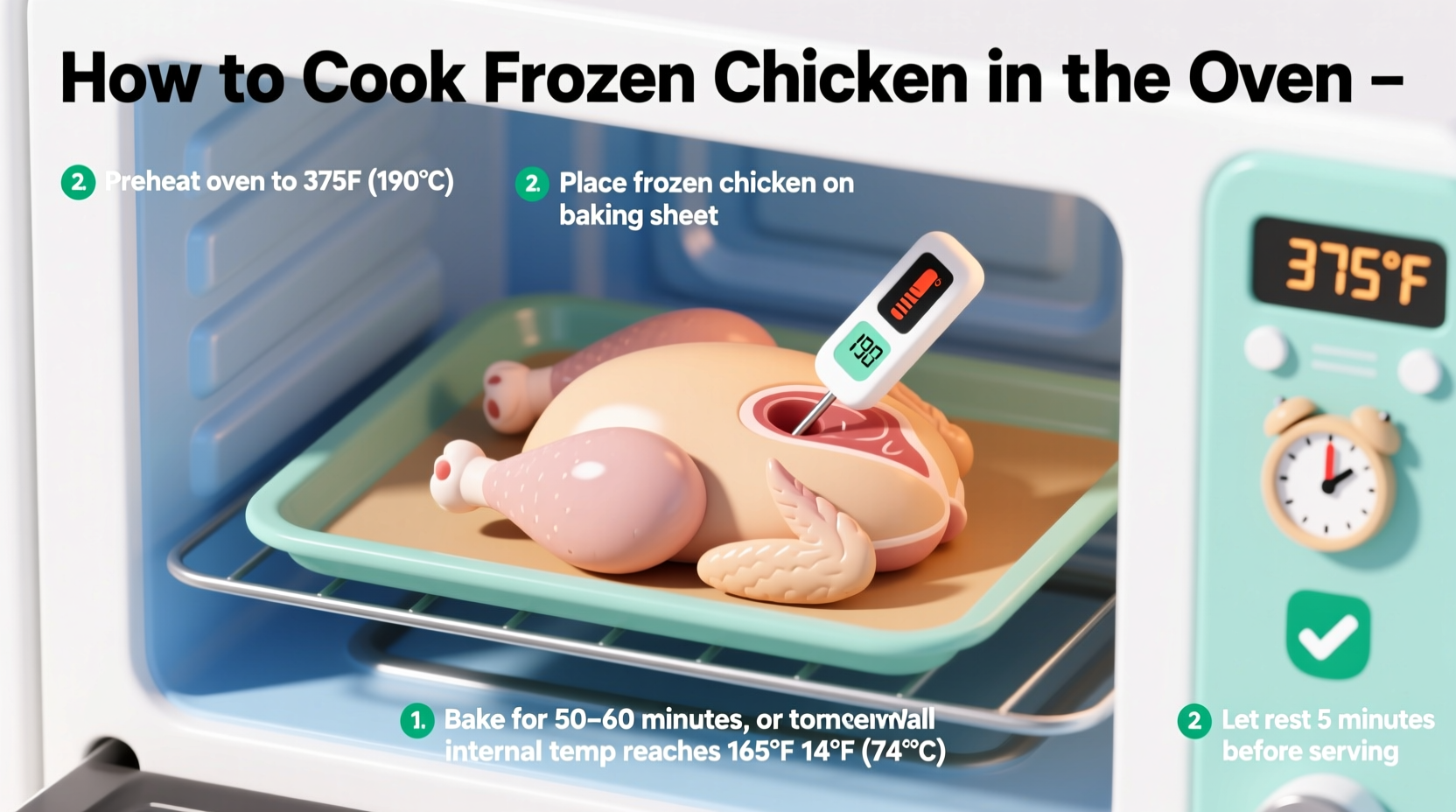Nothing ruins dinner plans faster than undercooked or dry chicken. When you're staring at frozen chicken breasts with dinner plans looming, you need precise timing guidance that delivers safe, juicy results every time. This guide provides science-backed cooking times that account for different cuts, oven temperatures, and safety requirements—so you can transform frozen poultry into perfectly cooked meals without guesswork.
Why Proper Frozen Chicken Cooking Time Matters
Incorrect cooking times create two serious problems: undercooked chicken risks Salmonella and campylobacter exposure, while overcooked chicken becomes dry and unappetizing. The USDA Food Safety and Inspection Service confirms that poultry must reach 165°F internally to eliminate harmful bacteria. When cooking from frozen, the extended time needed creates a dangerous zone between 40°F and 140°F where bacteria multiply rapidly if not managed properly.

Your Step-by-Step Frozen Chicken Cooking Process
Preparation Phase: Setting Up for Success
Before your frozen chicken touches the oven, follow these critical preparation steps:
- Never thaw at room temperature – This creates dangerous bacterial growth conditions
- Remove packaging – Especially foam trays that can leach chemicals when heated
- Pat surface dry – Moisture creates steam instead of proper browning
- Season after cooking – Salt draws out moisture that prevents proper browning
Temperature & Timing Guidelines by Chicken Cut
Cooking times vary significantly based on cut thickness and bone structure. Always use an instant-read thermometer for verification.
| Chicken Cut | Oven Temperature | Cooking Time | Internal Temp Target |
|---|---|---|---|
| Boneless breasts (6-8 oz) | 375°F (190°C) | 45-60 minutes | 165°F (74°C) |
| Bone-in thighs (drumettes) | 400°F (204°C) | 50-65 minutes | 175°F (79°C) |
| Whole chicken (3-4 lbs) | 375°F (190°C) | 1.5-2 hours | 165°F (74°C) |
| Chicken tenders | 400°F (204°C) | 25-35 minutes | 165°F (74°C) |
These times come from the USDA's Food Safety and Inspection Service guidelines, which specify that cooking times increase approximately 50% when preparing poultry from frozen. The National Chicken Council confirms that bone-in cuts require longer cooking due to thermal mass differences.
Monitoring Doneness: Beyond Just Timing
Timer settings alone won't guarantee safe chicken. Implement these verification methods:
- Thermometer check – Insert into thickest part without touching bone
- Juice color test – Clear (not pink) juices indicate proper cooking
- Texture assessment – Meat should feel firm but yield slightly to pressure
- Resting period – Let chicken rest 5-10 minutes after cooking for temperature equalization
Critical Safety Boundaries You Must Respect
While cooking frozen chicken is convenient, certain situations require immediate thawing instead:
- Stuffing inside poultry – Creates dangerous temperature pockets
- Pre-marinated products – Sugar content burns before interior cooks
- Thick cuts over 1.5 inches – Exterior dries before interior reaches safe temperature
- When precise texture matters – Restaurants always thaw for consistent results
Avoid These Common Frozen Chicken Mistakes
Even with correct timing, these errors compromise your results:
- Opening oven frequently – Each opening drops temperature by 25°F
- Crowding the pan – Creates steam environment instead of proper roasting
- Skipping the rest period – Juices escape when cutting too soon
- Guessing doneness – Visual cues alone are unreliable for safety
Perfect Results Every Time: Pro Techniques
Professional kitchens achieve consistently juicy chicken through these methods:
- Reverse sear approach – Cook at lower temperature first, then finish at 425°F for browning
- Aluminum foil tenting – Prevents over-browning during extended cooking
- Thermometer alarm – Set to 155°F for automatic notification before resting
- Oil coating – Light olive oil application improves heat transfer and browning
Frequently Asked Questions
Can I cook frozen chicken at 350°F instead of 375°F?
Yes, but increase cooking time by 15-20 minutes. Lower temperatures extend the time chicken spends in the danger zone (40°F-140°F), so monitor internal temperature carefully. The USDA recommends minimum 350°F for safe frozen poultry cooking.
Why does my frozen chicken always come out dry?
Dry chicken typically results from overcooking or skipping the resting period. Frozen chicken requires precise timing because the extended cooking time easily pushes moisture past its evaporation point. Always remove chicken at 160°F and let carryover cooking bring it to 165°F during the 5-10 minute rest period.
Is it safe to cook frozen chicken without thawing?
Yes, when following proper guidelines. The USDA Food Safety and Inspection Service confirms it's safe to cook poultry from frozen as long as you increase cooking time by 50% and verify internal temperature reaches 165°F. Never cook frozen chicken in slow cookers due to prolonged time in the danger zone.
How do I prevent frozen chicken from burning on the outside?
Use a two-stage cooking method: start at 325°F until internal temperature reaches 120°F, then increase to 425°F for browning. Alternatively, tent with aluminum foil for the first 75% of cooking time. Avoid high initial temperatures which cause exterior burning before interior cooks.











 浙公网安备
33010002000092号
浙公网安备
33010002000092号 浙B2-20120091-4
浙B2-20120091-4